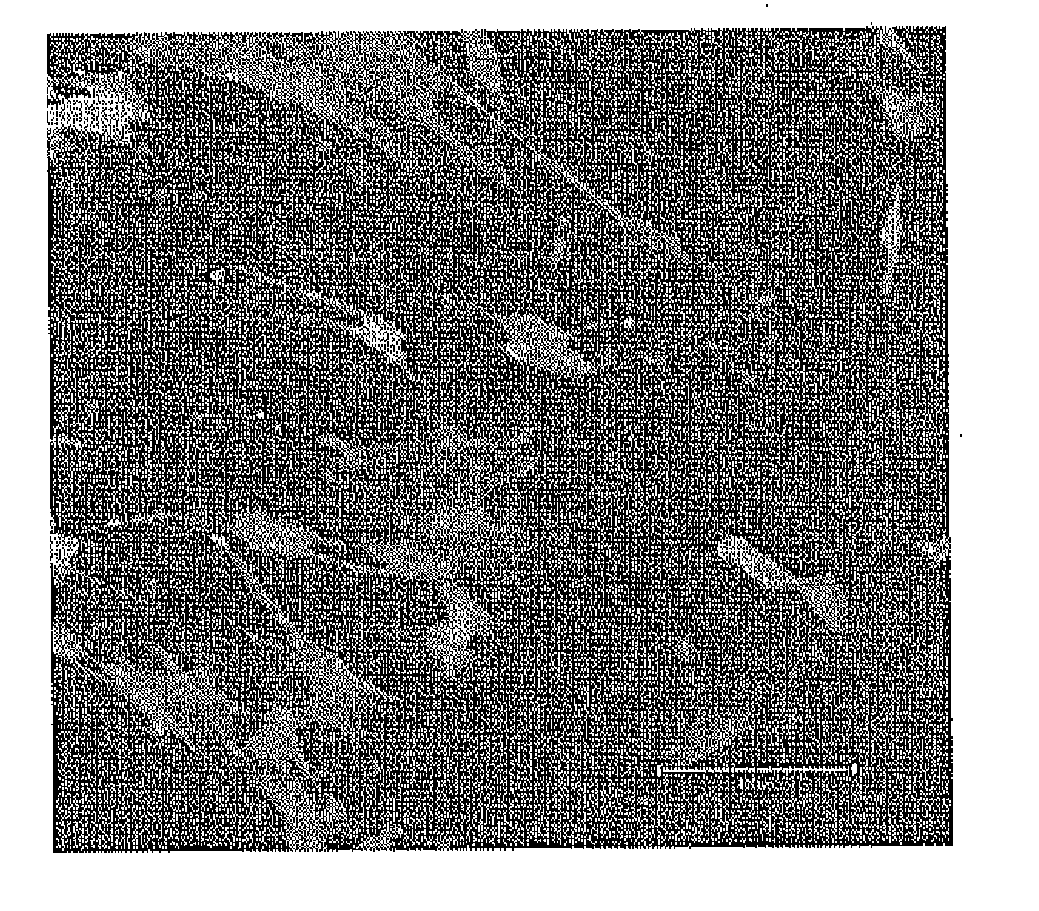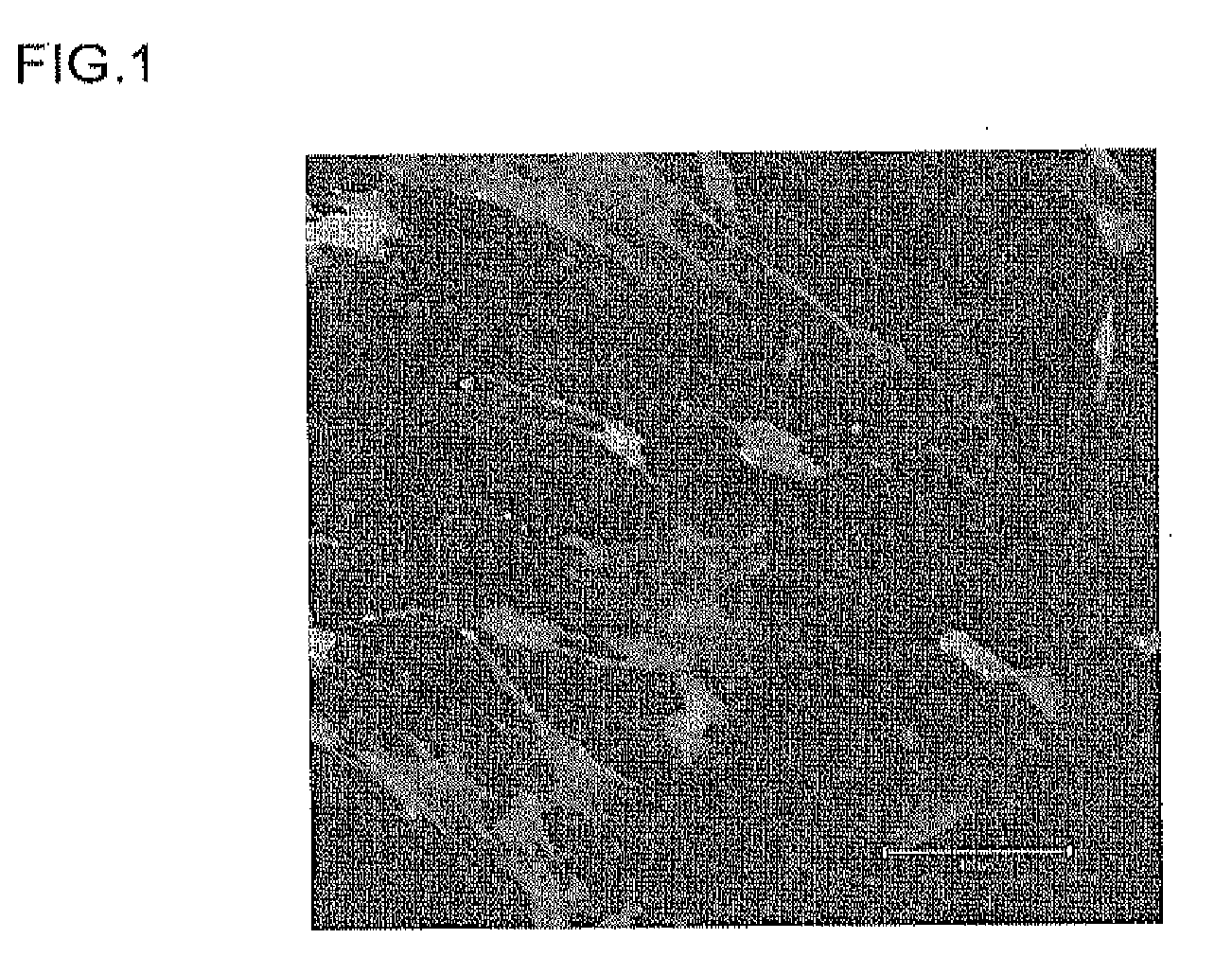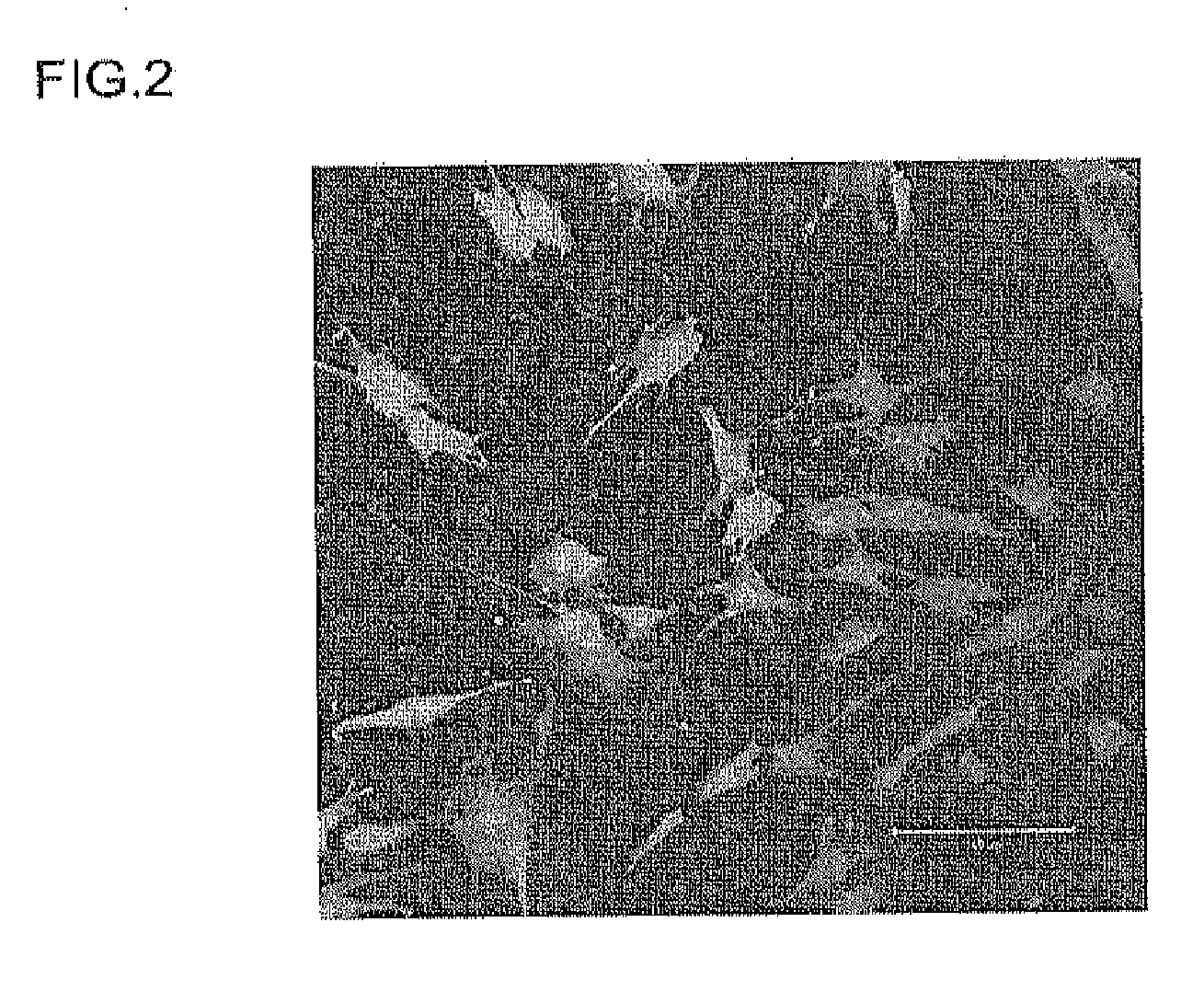Carrier peptide fragment and use thereof
a technology of carrier peptides and peptides, which is applied in the direction of peptide/protein ingredients, depsipeptides, fusion polypeptides, etc., can solve the problem of site (or organelle) to which the foreign substance of interest can be transferred, and achieve the effect of reducing the number of sites
- Summary
- Abstract
- Description
- Claims
- Application Information
AI Technical Summary
Benefits of technology
Problems solved by technology
Method used
Image
Examples
example 1
Preparation of Construct for Transferring a Foreign Substance
[0114]A total of fourteen types of peptides (Sample No. 1 to Sample No. 14) described below were produced using a peptide synthesizer. Table 1 shows the amino acid sequences of these synthetic peptides.
TABLE 1TotalSam-aminopleacidNo.Amino acid sequenceresidues1(FITC-Acp)-RSRKYTSWYVALKR(SEQ ID14NO: 1)2(FAM)-MAKSIRSKHRRQMRMMKRE(SEQ ID19NO: 2)3(FITC-Acp)-MARRRRHRGPRRPRPP(SEQ ID16NO: 3)4(FITC-Acp)-GRCRRLANFGPRKRRRRRR(SEQ ID19NO: 4)5(FITC-Acp)-RRRKRNRDARRRRRKQ(SEQ ID16NO: 5)6(FAM)-MQRKPTIRRKNLRLRRK(SEQ ID17NO: 6)7(FITC-Acp)-IMRRRGL(SEQ ID7NO: 7)8(FITC-Acp)-KKLKKRNK(SEQ ID8NO: 8)9(FAM)-RRRANNRRR(SEQ ID9NO: 9)10(FAM)-RKKRKKK(SEQ ID7NO: 10)11(FAM)-KRKGKLKNKGSKRKK(SEQ ID15NO: 11)12(FAM)-SKRLSSRARKRAAKRRLG(SEQ ID18NO: 12)13(FAM)-KRPRRRPSRPFRKP(SEQ ID14NO: 13)14(FITC-Acp)-(SEQ ID29RSRKYTSWYVALKRTLKERCLQVVRSLVKNO: 94)
[0115]As shown in Table 1, Sample Nos. 1 to 13 are synthetic peptides comprising the carrier peptide fragments of SEQ I...
example 2
Evaluation of Cell Membrane Permeability Function of Each Sample (Construct) (1)
[0121]Human neonate foreskin fibroblasts (ATCC Catalogue No. CRL-2097) were used as the eukaryotic cells, and the cell membrane permeability capability of the samples (constructs for transferring a foreign substance) obtained in Example 1 above was investigated.
[0122]More specifically, the abovementioned fibroblasts were cultured in a liquid mixture of 90% Eagle MEM culture medium (containing 0.1% nonessential amino acids, 2 mM L-glutamine, 1 mM sodium pyruvate, and 1.5 g / L sodium hydrogen carbonate) and 10% serum (FBS) as the culture medium.
[0123]The cultured cells were trypsinized for 1 min at 37° C. with a 0.25% trypsin solution. After the abovementioned treatment, the trypsin was deactivated with FBS-containing medium, and a cell suspension (test sample for foreign substance transfer) was prepared by adjusting the cell concentration to approximately 5×104 cells / mL with the culture medium.
[0124]Next, ...
example 3
Evaluation of Cell Membrane Permeability Function of Sample No. 1 and Sample No. 2 (2)
[0132]The target cells for transferring the foreign substance were changed from human neonate foreskin fibroblasts to human iPS cells (human induced pluripotent stem cells), and the cell membrane permeability capability of the two samples (constructs for transferring a foreign substance) obtained in Example 1 above was investigated. It should also be noted that the iPS cells (cell line 201B2-082008KU) and the mouse embryonic fibroblast feeder cells (cell line SNL 76 / 7, hereinafter “MEF”) used in this example were provided by the Yamanaka Research Laboratory of the Institute for Frontier Medical Sciences, Kyoto University (professor Shinya Yamanaka).
[0133]First the obtained MEF were inactivated by a mitomycin C treatment (3 hours) and then trypsinized in a 0.25% trypsin solution containing 1 mM EDTA. After the above treatment, the trypsin was deactivated with culture medium containing FBS, and the M...
PUM
 Login to View More
Login to View More Abstract
Description
Claims
Application Information
 Login to View More
Login to View More - R&D
- Intellectual Property
- Life Sciences
- Materials
- Tech Scout
- Unparalleled Data Quality
- Higher Quality Content
- 60% Fewer Hallucinations
Browse by: Latest US Patents, China's latest patents, Technical Efficacy Thesaurus, Application Domain, Technology Topic, Popular Technical Reports.
© 2025 PatSnap. All rights reserved.Legal|Privacy policy|Modern Slavery Act Transparency Statement|Sitemap|About US| Contact US: help@patsnap.com



